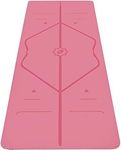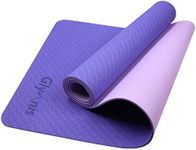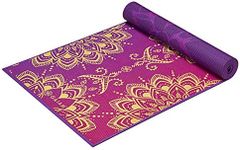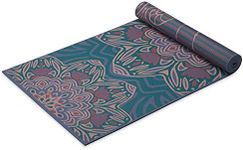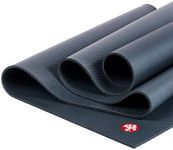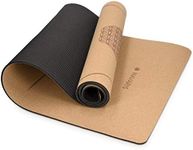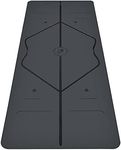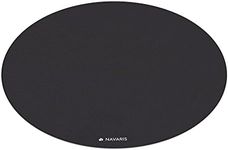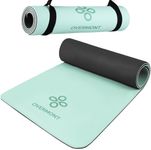Buying Guide for the Best Hot Yoga Mats
Choosing the right hot yoga mat is essential for a comfortable and safe practice, especially since hot yoga involves a lot of sweating and movement. The best mat for you will depend on your personal preferences, the type of yoga you practice, and how much support and grip you need. Understanding the key features of yoga mats will help you make a choice that enhances your experience and keeps you focused on your practice rather than worrying about slipping or discomfort.MaterialThe material of a hot yoga mat determines its grip, durability, and how easy it is to clean. Common materials include natural rubber, PVC, TPE, and cork. Natural rubber and cork are popular for their eco-friendliness and excellent grip, especially when wet, while PVC and TPE are lighter and often more affordable. If you sweat a lot, look for materials that become grippier with moisture. Consider your sensitivity to smells and chemicals, as some materials have a strong odor when new. Your choice should be guided by your values (eco-friendly vs. synthetic), how much you sweat, and your need for grip.
ThicknessThickness affects the comfort and stability of your mat. Mats typically range from about 1mm (very thin, travel mats) to 6mm (extra cushioned). Thinner mats (1-3mm) are lightweight and provide a strong connection to the floor, which is good for balance poses but may be less comfortable for your joints. Medium thickness (4-5mm) offers a balance of comfort and stability, suitable for most people. Thicker mats (6mm and above) provide more cushioning, which is helpful if you have sensitive knees or practice on hard floors, but they can make balancing harder. Choose thickness based on your comfort needs and how much you move or balance in your practice.
Grip and TextureGrip is crucial in hot yoga to prevent slipping when you sweat. Some mats have a naturally sticky surface, while others rely on a textured pattern to provide traction. Mats designed for hot yoga often get grippier as they get wetter. If you tend to sweat a lot, look for mats specifically labeled as 'non-slip' or 'for hot yoga.' If you prefer a smoother feel, test the mat's grip with wet hands if possible. Your choice should depend on how much you sweat and how much you move during your practice.
Absorbency and Drying TimeAbsorbency refers to how well the mat soaks up sweat, which can help prevent puddles and slipping. Some mats are designed to absorb moisture, while others repel it and require a towel on top. Mats that absorb sweat can feel drier during practice but may take longer to dry after cleaning. If you want a mat that dries quickly and is easy to clean, look for one with a closed-cell surface. If you sweat heavily and want to avoid using a towel, an absorbent mat may be better. Think about your sweat level and how often you want to clean and dry your mat.
Weight and PortabilityThe weight of your mat matters if you plan to carry it to and from the studio. Heavier mats tend to be more durable and stable, but they can be cumbersome to transport. Lightweight mats are easier to carry but may offer less cushioning and stability. If you travel often or walk long distances to class, a lighter mat is more convenient. If you mostly practice at home or don’t mind carrying extra weight, a heavier mat can provide more comfort and durability.
SizeYoga mats come in different lengths and widths. Standard mats are about 68 inches long and 24 inches wide, but longer or wider mats are available for taller people or those who want more space. If you are tall or like to stretch out, look for a longer mat to ensure you stay on the mat during all poses. If space is limited or you prefer a compact mat, a standard size will suffice. Your height and personal space preference should guide your choice.
Ease of CleaningHot yoga mats need to be cleaned frequently due to sweat and bacteria. Some mats can be wiped down easily, while others require more thorough cleaning. Mats with closed-cell surfaces resist moisture and are easier to clean, while open-cell or absorbent mats may need more care. If you want a low-maintenance mat, look for one that is easy to wipe clean and dries quickly. Consider how much time you want to spend on cleaning and how often you practice.
